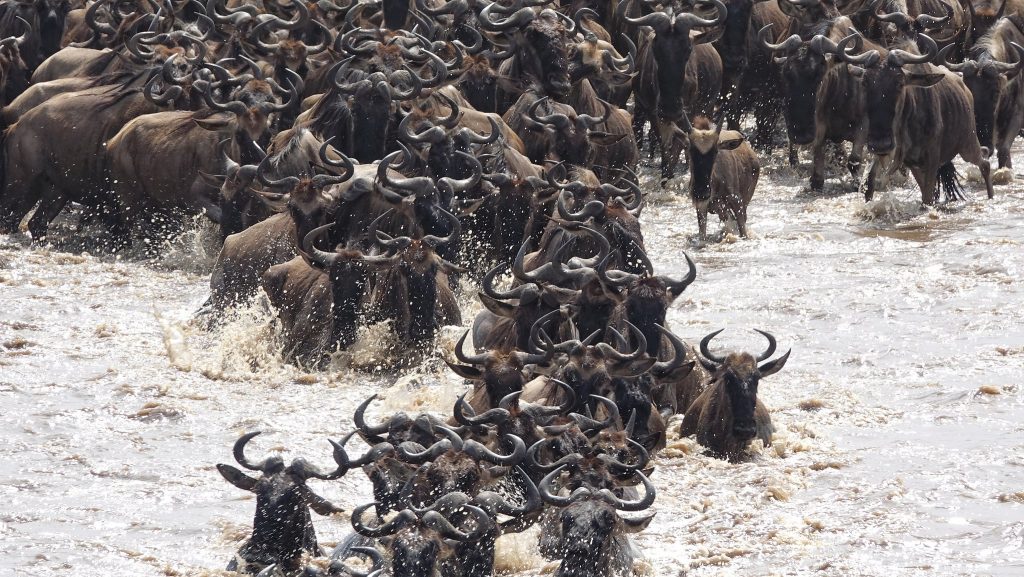Wildebeest Migration Wonder of the World
Migration safaris, holidays & tours
Wildebeest Migration Wonder of the World
The Wildebeest Migration is known as one of the “Wonders of the Natural World.” This amazing event happens every year and involves over a million wildebeest moving with hundreds of thousands of zebras and other animals. They travel a long way between the Serengeti in Tanzania and the Maasai Mara in Kenya.
This journey is not only a thrilling sight for tourists but also important for the ecosystem. As the wildebeest graze, they help keep the grasslands healthy, supporting many other animals. Protecting this migration is essential so that future generations can enjoy this incredible natural event.
The Great Wildebeest Migration
The annual migration of massive herds of grazers across Northern Tanzania and Kenya, known as the Great Wildebeest Migration Wonder of the World, is a truly spectacular event. Over two million wildebeest, zebras, and gazelles migrate in a predictable pattern through the Serengeti and Masai Mara ecosystems in search of green pasture. This is without a doubt one of the world’s greatest natural wonders.
Safari Holidays to See the Great Migration: The Basics
- The Great Migration is visible all year in Tanzania; the animals migrate in a circular motion around the Serengeti National Park, so it is a year-round event. We’ll go over where the wildebeest are most likely to be at different times of the year.
- The Great Wildebeest Migration rarely visits Kenya’s Masai Mara; the herds only go there as an extension of their grazing lands in Tanzania’s northernmost region if they are in need of fresh pastures. The migration is only visible in Kenya for a few months of the year, when the herds are on their way to the border, and even then, most of the herds are still mulling around the Serengeti’s northern regions…
The Annual Migration overview: the best times to visit The Wildebeest in Africa
- July – October: This is when the wildebeest are in the northern Serengeti plains, and you have a chance of seeing up to thousands crossing the great Mara River. As the sight of the wildebeest crossing the so dramatic, it is considered by many the most desirable time to see the migration.
- December – March: Currently the wildebeest are in the southern area of the Serengeti, more specifically in Ndutu which is actually in the Ngorongoro Conservation Area, and it is calving season. Along with the river crossings, this is a real highlight of the wildebeest’s journey and a fabulous time to see the herds congregate on the dramatic sweeping plains of the south. February is the only time of year when you are almost guaranteed to see the big herds all together as they always come south for calving season.
- The rest of the year: In November, April, May and June the migration is “in between” locations and as such these months are slightly transitional times to see the herds. November is the short rains, April and May are the long rains and as such the grass is green in these months across the Serengeti, so the wildebeest are more dispersed than in the prime time of July – October and December – March. Thus, you don’t get as many of those condensed big herds which people get excited about!





Custom designed Migration safaris in Tanzania, Let’s Go!
Sounds good? Now it’s time to start planning your Migration safaris in Tanzania, holidays & tours Contact one of our travel experts to get the process started.


Wildebeest Migration Safari Packages / Get ready to see the wonder of the world
Our favourite tours showcasing the best of Tanzania Wildlife Safaris











